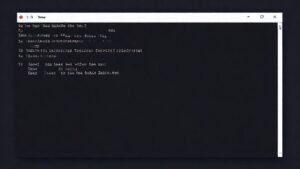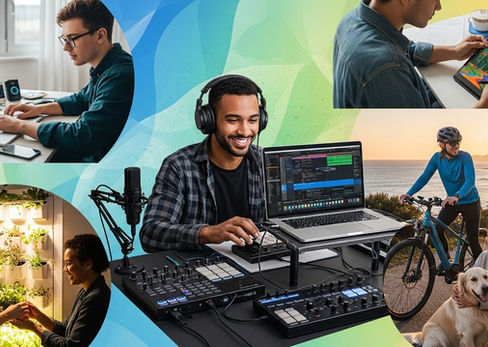US visa interview policy: NIV appointment changes explained
- THE MAG POST

- Sep 8
- 5 min read

US visa interview policy is tightening, reshaping how applicants pursue travel and work opportunities. This tightening signals a broader recalibration of mobility controls, with Indian applicants historically seeking quick NIV slots abroad.
As policy evolves, this piece explores practical implications, timelines, and plausible alternatives for students, professionals, and families navigating shifting visa calendars.
Policy Shift Reshapes NIV Interview Scheduling
A seismic shift is quietly rewriting the map of NIV interviews for applicants worldwide. This drama unfolds as the US tightens procedures and centralizes appointment routing, affecting how Indians strategize their travel and visa timelines.
Across the globe, policy levers now push nearly all non-immigrant visa interviews toward the home country or approved residence, upending the informal habit of seeking quick slots in distant capitals.
Backlog pressures and cross-border interviews
During the worst of the Covid-era backlogs, Indian applicants frequently traveled to Singapore, Bangkok, or even Frankfurt to secure B1/B2 slots. The logic was simple: when domestic calendars stretched for months, a short hop abroad could spare months of waiting at home. This pattern embedded a new calculation in visa planning, combining travel costs with time-sensitive business needs.
Today, the policy change narrows that option by directing NIV interviews to be scheduled in the applicant's home country or country of residence, with only narrow, clearly defined exceptions. The administrative shift reduces ripple effects of backlogs and consolidates processing within the diplomatic footprint of the United States.
Administrative changes at consulates
Officials frame the update as a simplification, yet applicants now face fresh constraints. The requirement to book in the home country or country of residence means more travel planning, potential visa renewals, and additional documentation checks at embassies that may differ from prior experiences.
Limitations remain for places where routine NIV services do not operate, but the global reach of US consular operations means the practical effect is centralization of scheduling. Applicants in India must align timelines with domestic processing windows and monitor any temporary exemptions.
What Indian Applicants Face Now
Indian applicants are now navigating a tighter framework for NIV interviews, with home-country booking becoming the default pathway.
The change invites careful planning around timelines, travel costs, and visa documentation, especially for students, professionals, and families balancing multiple timelines.
Immediate practical effects
Applicants in India will coordinate appointment dates with the consulate pool in their home region, rather than chasing slots in foreign hubs. Domestic wait times persist longer than before, elevating the importance of early scheduling and proactive visa preparation.
Longer domestic processing windows may influence scholarship deadlines, job start dates, and family travel plans, requiring revised contingency plans and budget adjustments to accommodate potential delays in visa stamping.
Where exceptions might apply
Exceptions are limited to countries where routine NIV services are not conducted or where official policy allows cross-border interviews in narrow emergencies.
If an applicant holds citizenship or residence in a country with no routine NIV operations, designated locations may still be considered, but such cases demand thorough documentation and explicit approval from consular authorities.
Historical Context and Global Patterns
To understand the current shift, it helps to recall COVID-era patterns and the global mobility responses that emerged as wait times ballooned.
During that period, some consulates in Europe and Asia reported isolated efforts to accommodate Indian applicants in cities like Frankfurt or Singapore. While these anecdotes illustrate demand, the new rule curtails such expedients by centralizing interviews in home countries where routine services exist.
Covid-era shifts and migration
Covid-era backlogs forced many to weigh travel costs against time-to-appointment. Families and students often re-booked flights, arranged temporary stays, and navigated visa stamping abroad while awaiting domestic slots. The experience highlighted the fragility of the NIV scheduling ecosystem and the value of systematic, predictable processes.
As processing pathways adjust, stakeholders have learned to diversify routes—yet this diversification comes at a cost, including higher travel expenses and greater coordination demands for deadlines tied to studies or employment.
Notable cross-border episodes (Frankfurt, Rio, Chiang Mai)
In the past, a few consulates carved out slots for Indian applicants in non-home locations when wait times in India were extreme. Reports described itineraries that mixed business trips with visa appointments or long layovers for passport collection. Those patterns receded as policy tightened and centralization intensified.
Broader Implications for Mobility and Policy
The policy shift signals a broader stance on immigration and mobility, blending security concerns with practical management of demand for US entry.
For students, professionals, and families, the change underscores the importance of aligning visa planning with academic calendars, work commitments, and familial obligations while staying alert for exemptions and transitional policies that may appear during migration cycles.
Impact on education, work, and travel
Education timelines and work start dates hinge on timely visa stamping. Delays can ripple into orientation programs, scholarship eligibility, and internship opportunities, prompting proactive contingency planning and early application cycles to mitigate risk.
Travel budgets must reflect potential increases in domestic processing loads and possible airline changes, with families tracking passport validity and renewal windows to prevent last-minute disruptions.
What policymakers and applicants can learn
Policymakers gain insight into how centralized interview regimes influence applicant behavior, migration flows, and diplomacy. Applicants benefit from transparent timelines, complete documentation, and early awareness of exemptions to minimize wasted trips and ensure compliance with evolving rules.
Key Takeaways
Summary of main points
The current policy tightens NIV interview scheduling by steering most applicants toward home-country processes, with limited exceptions. Indian applicants should prepare by revising timelines, budgets, and documentation while monitoring any exemptions.
Understanding the changes helps travelers and students align their milestones with realistic visa issuance windows, reducing stress and avoiding costly detours.
Actionable steps for readers
Map out a 6–12 month visa calendar, prioritizing domestic appointment slots and backup plans. Maintain copies of all required documents, verify exemptions early, and engage trusted travel agents or university offices for guidance on legitimate cross-border options when applicable.
Share this overview with peers facing NIV interviews and stay updated on consulate notices and renewal policies to minimize disruption to study, work, and travel plans.
Aspect | Details |
Change | Non-immigrant visa interviews must generally be scheduled in the home country or country of residence; limited global exceptions exist. |
Wait times (India) | Hyderabad/Mumbai: ~3–4 months; Delhi: ~4–5 months; Kolkata: ~5 months; Chennai: ~9–10 months. |
Past pattern | During Covid backlog, some applicants interviewed abroad (Singapore, Frankfurt, etc.) to secure faster slots. |
Exceptions | Only nationals of countries without routine NIV services may interview elsewhere; examples include Russia, Afghanistan, Iran in designated locations. |
Impact on planning | Applicants should anticipate centralized scheduling and adjust timelines, budgets, and documentation accordingly. |






















































Comments